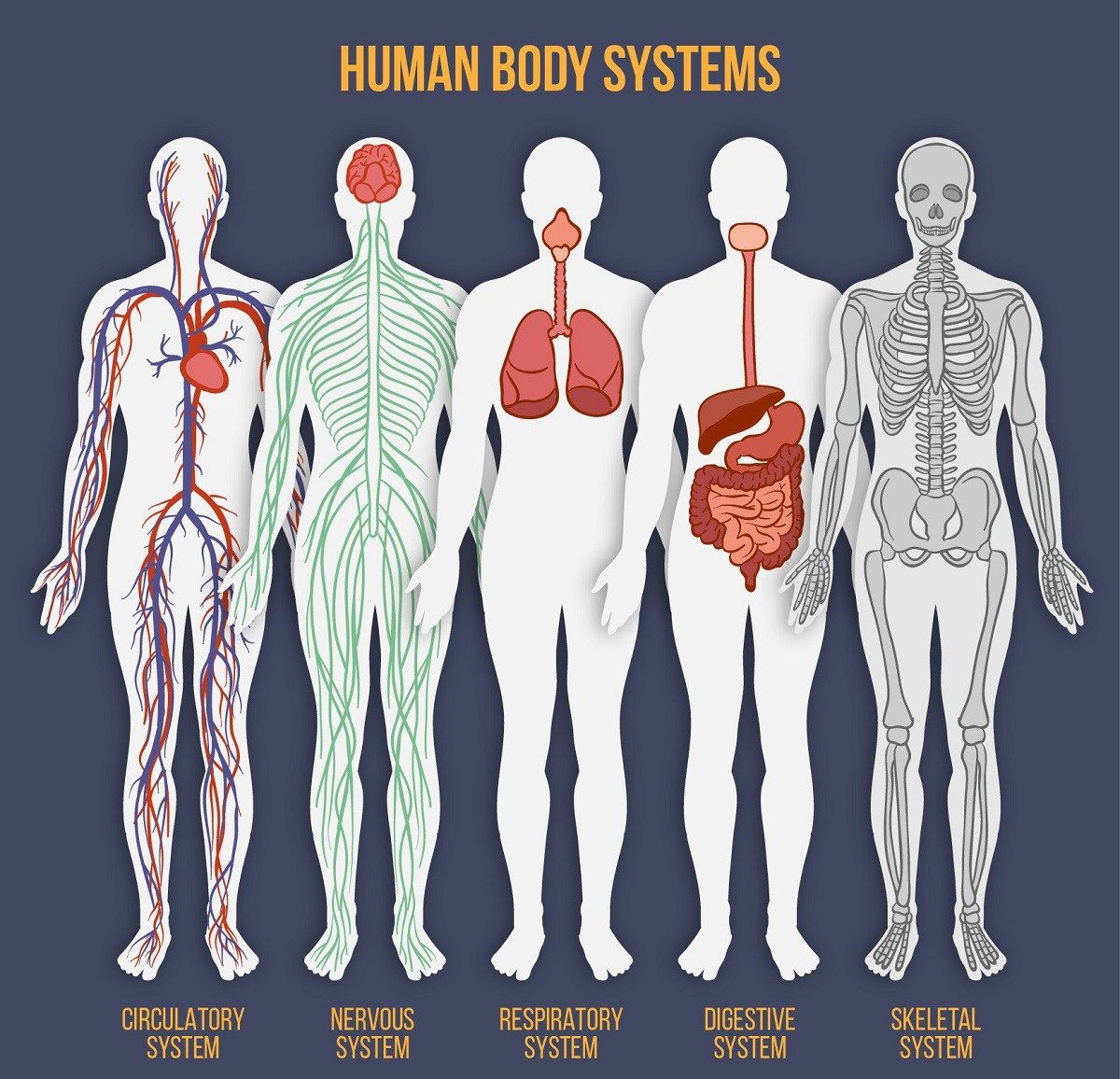If you are searching for human body systems and their functions so you are on the right page . Here, we will discuss how human body works as a system.

Human Body Systems and Their Functions
The human body is a complex system made up of many different parts, all working together to keep us alive and healthy. These parts are organized into groups called organ systems. Each organ system has a specific function, and they all work together to maintain homeostasis, or balance, in the body.
Major organ systems in the human body:
There are 11 major organ systems in the human body:

Skeletal System
Skeletal system: The skeletal system is made up of bones and cartilage. It provides support and structure for the body, and it also protects the internal organs.

Muscular System
Muscular system: The muscular system consists of all the muscles in the body. Muscles allow us to move, and they also help to circulate blood and maintain body temperature.

Cardiovascular System
Cardiovascular system: The cardiovascular system is made up of the heart and blood vessels. It circulates blood throughout the body, delivering oxygen and nutrients to the cells and removing waste products.

Respiratory System
Respiratory system: The respiratory system allows us to breathe. It consists of the lungs and airways, which transport oxygen from the air into the bloodstream and carbon dioxide from the bloodstream out into the air.

Digestive System
Digestive system: The digestive system breaks down food into nutrients that the body can use. It consists of the mouth, stomach, intestines, and other organs.

Urinary System
Urinary system: The urinary system filters waste products from the blood and excretes them from the body. It consists of the kidneys, ureters, bladder, and urethra.

Endocrine System
Endocrine system: The endocrine system produces and secretes hormones, which regulate many different bodily functions, such as growth, metabolism, and reproduction.

Lymphatic System
Lymphatic system: The lymphatic system is made up of a network of vessels and nodes that transport lymph fluid throughout the body. Lymph fluid contains white blood cells, which help to fight infection.

Reproductive System
Reproductive system: The reproductive system is responsible for reproduction. In males, it consists of the testicles, scrotum, penis, and vas deferens. In females, it consists of the ovaries, fallopian tubes, uterus, cervix, and vagina.

Integumentary System
Integumentary system: The integumentary system is the skin. It protects the body from the environment and helps to regulate body temperature.

Nervous System
Nervous system: The nervous system controls all of the body’s functions. It consists of the brain, spinal cord, and nerves.

How the organ systems work together
The organ systems in the human body work together in many different ways. For example, the digestive system breaks down food into nutrients that the body can use, and the circulatory system transports those nutrients to all of the cells in the body. The respiratory system provides the body with oxygen, and the cardiovascular system circulates that oxygen to all of the cells. The endocrine system produces hormones that regulate many different bodily functions, including digestion, metabolism, and reproduction. The human body work as a system
Maintaining homeostasis
Homeostasis is the maintenance of a stable internal environment in the body. The organ systems work together to maintain homeostasis by regulating things like body temperature, blood sugar levels, and pH balance. For example, if your body temperature starts to rise, the hypothalamus in your brain will send signals to your sweat glands to start sweating, which will help to cool you down.
Conclusion
The human body is a complex system made up of many different organ systems, all working together to keep us alive and healthy. The organ systems are essential for maintaining homeostasis and carrying out all of the body’s functions.

Leave a Reply